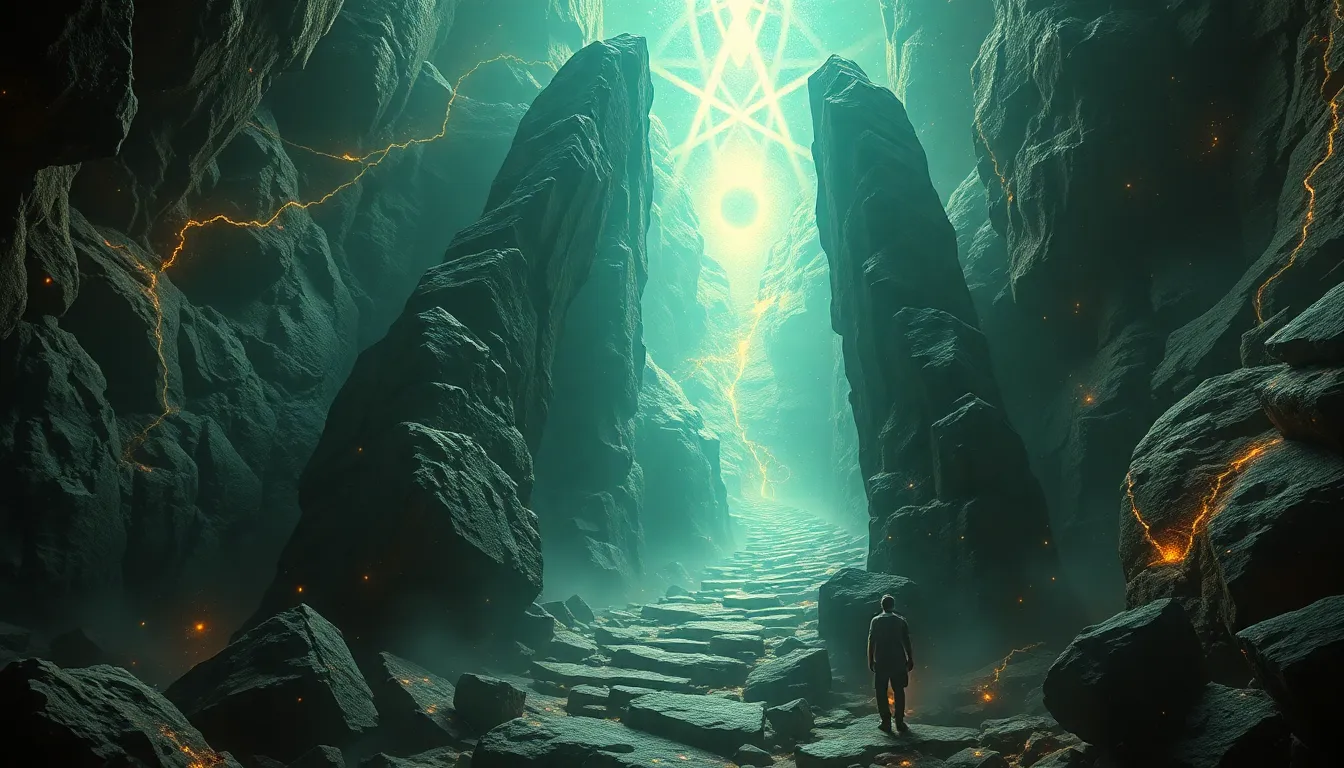The Allure of Waterfalls in Indonesian Folklore
Indonesia, with its diverse landscapes and abundant rainfall, is home to countless waterfalls. These majestic cascades have captivated the imaginations of Indonesians for centuries, weaving their way into the rich tapestry of Indonesian folklore. Waterfalls, with their powerful currents and mists that shroud their surroundings, are seen as places of mystery, wonder, and even divine power. For generations, stories have been passed down about these natural wonders, tales that explain their origins, the spirits that inhabit them, and the rituals that connect people to them. These stories not only illuminate the cultural beliefs of different Indonesian communities but also highlight the deep connection between humans and the natural world.
Waterfalls as Sacred Sites: Connecting the Physical and Spiritual
Across Indonesia, waterfalls are not just beautiful natural features but are often seen as sacred sites, imbued with spiritual significance. In the animistic worldview common in many parts of the archipelago, the natural world is believed to be inhabited by spirits or deities. Waterfalls, with their awe-inspiring power and transformative nature, are considered especially potent places for spiritual connection. They are seen as gateways to the spirit world, where humans can seek guidance from ancestral spirits, ask for blessings, or appease the deities who control the elements. For example, in many regions, offerings are left at waterfalls in the form of food, flowers, or incense to honor the spirits that reside there and ensure their favor.
Waterfall Spirits: Guardians and Protectors of Nature
The stories of waterfalls often feature powerful spirits or deities who are believed to reside within them. These spirits are often seen as protectors of the natural world, ensuring the balance of nature and guarding the sacredness of the waterfall. Sometimes these spirits are depicted as benevolent beings, aiding humans and granting them blessings. In other legends, they are portrayed as fierce guardians, punishing those who disrespect the waterfall or the forest that surrounds it. These stories serve as warnings to protect the environment and its natural wonders, reinforcing the idea that humans are not the sole inhabitants of the world but share it with other beings.
The Significance of Waterfalls in Rituals and Ceremonies
Waterfalls hold a special place in many rituals and ceremonies in Indonesia. They are often chosen as locations for important rites of passage, such as births, marriages, or deaths. The powerful energy of the water is believed to cleanse the participants, usher them into a new phase of life, or help them transition to the afterlife. For example, in some regions, newlyweds will visit a waterfall to receive blessings for a long and prosperous marriage. In others, ceremonies are held at waterfalls to appease spirits or ask for rain during times of drought. These practices reflect the deep connection between the physical act of visiting a waterfall and the spiritual beliefs of the people.
Myths of Origin: Waterfalls as Birthplaces of Gods and Heroes
Many Indonesian myths and legends are centered around waterfalls, attributing their creation to supernatural events or the actions of gods and heroes. Some stories explain the formation of waterfalls as the result of battles between powerful deities, leaving behind a cascade as a mark of their conflict. Other legends tell of a god or hero who cleaved the earth with a magical weapon, creating a flowing stream that eventually became a majestic waterfall. These myths not only provide explanations for natural phenomena but also connect the landscape to the realm of the divine, adding an extra layer of significance to these natural wonders.
Waterfalls as Portals to the Otherworld
In Indonesian folklore, waterfalls often serve as mystical gateways to the spirit world or the realm of the ancestors. These portals are not always visible to the human eye and may only be accessible during specific times or rituals. In some stories, the mist from a waterfall acts as a veil, blurring the line between the physical world and the spiritual realm. It is believed that spirits can travel through these watery portals, appearing to humans in dreams, visions, or as physical manifestations. Some people believe that by standing near a waterfall or entering the water itself, they can access the otherworld and connect with spirits. The idea of waterfalls as portals reinforces the concept of a spiritual world that is always present, interwoven with the natural world.
The Role of Waterfalls in Local History and Identity
Waterfalls often hold deep cultural and historical significance for local communities in Indonesia. They are intertwined with the stories of ancestors, the establishment of settlements, and the development of cultural traditions. Many villages and towns trace their origins back to waterfalls, where their ancestors first settled. The presence of a waterfall may have influenced the choice of location for a village, providing a source of water, a fertile environment for agriculture, or a strategic location for trade. Over generations, these waterfalls have become symbols of local identity, representing the history, culture, and resilience of the community. Visiting these waterfalls is often a way for people to connect with their heritage and honor their ancestors.
Theories on the Persistence of Waterfall Myths
The enduring popularity of waterfall myths in Indonesia reflects the deep connection between humans and the natural world. The awe-inspiring power and mystery of waterfalls have fueled the imaginations of people for centuries, leading to the creation of stories that explain their origins, the spirits that inhabit them, and the connection between humans and the divine. Several theories attempt to explain the persistence of these myths.
One explanation is the influence of animistic beliefs, which are common in many parts of Indonesia. Animism views the natural world as imbued with spirits or deities, and waterfalls are often seen as particularly potent places for spiritual connection. Another theory suggests that these myths serve to protect the environment and its natural wonders. The stories about powerful spirits or guardians who punish those who disrespect the waterfall or the forest that surrounds it serve as reminders to respect nature. Additionally, the myths may also reflect the need for humans to make sense of their place in the world and to find meaning in the natural world around them.
Influence of Animistic Beliefs: Respect for Nature and its Spirits
Across Indonesia, animistic beliefs are deeply intertwined with the reverence for waterfalls. People believe that these natural wonders are inhabited by spirits, often referred to as sundel bolong (female spirits), hantu (ghosts), or dewa (deities). These spirits are believed to guard the waterfalls, ensuring their balance and power. To honor these spirits and appease their potential wrath, people offer gifts like food, flowers, or incense at the waterfall's base. There are stories where disrespectful behavior towards the waterfall and its spirits results in misfortune, disease, or even death. These stories serve as warnings, encouraging people to respect nature and its spirits, recognizing that humans are not the only inhabitants of the world.
Modern Interpretations: Waterfalls as Symbols of Nature’s Power and Beauty
In modern Indonesia, waterfalls continue to hold a special place in the hearts and minds of people. While the myths and legends surrounding waterfalls are still passed down through generations, they are often interpreted in light of contemporary values and concerns. Many see waterfalls as symbols of nature's power and beauty, promoting conservation and environmental protection. The awe-inspiring power of these cascades reminds people of the fragility and importance of the natural world. Waterfalls are also sought after as tourist destinations, attracting visitors from both within Indonesia and around the world. However, tourism is also raising concerns about the potential impact on the environment, leading to calls for responsible tourism practices and the preservation of these natural wonders for future generations.
FAQ
Q: Are there any specific waterfalls in Indonesia that are particularly famous for their folklore?
A: Many waterfalls hold significant folklore, but some of the most famous include:
- Curug Sewu: In Central Java, the name "Sewu" means "thousand," and this waterfall is said to have a thousand cascades, creating a mystical and powerful atmosphere.
- Curug Ciletuh: Located in West Java, this cascading waterfall is known for its beauty and the stories of ancient spirits said to reside within its waters.
Q: Are people still afraid of the spirits that are said to inhabit waterfalls?
A: While people might not be actively afraid, a sense of respect and reverence for the spirits is still present in many communities. The stories are often told as cautionary tales, encouraging people to treat the waterfalls and surrounding environment with respect.
Q: How do these myths and stories influence the way people interact with waterfalls today?
A: The stories impact the way people interact with waterfalls in several ways. It influences their behavior, instilling a sense of respect and awe for these natural wonders. The myths also inform tourism development, highlighting the cultural and spiritual significance of these sites.


